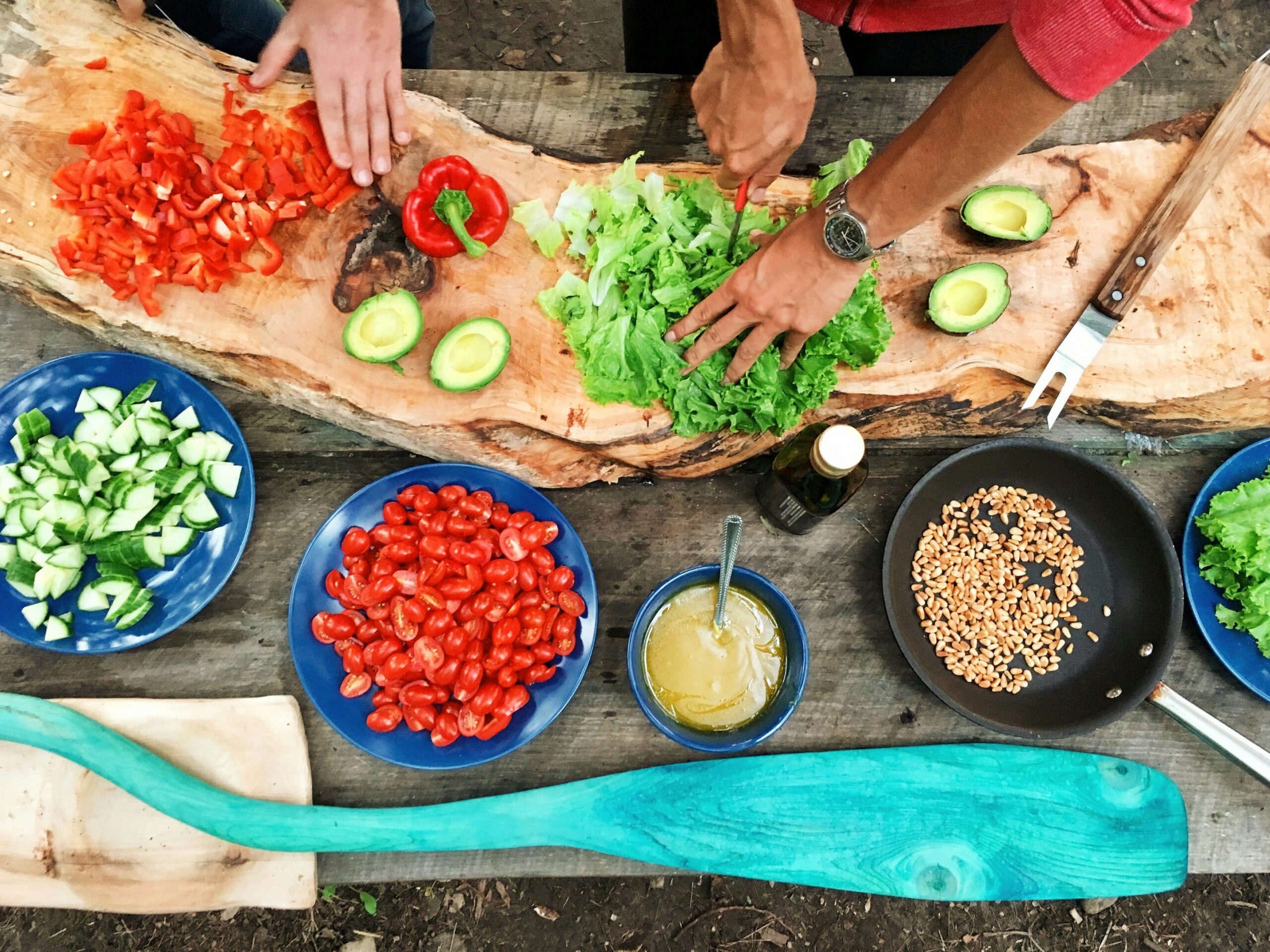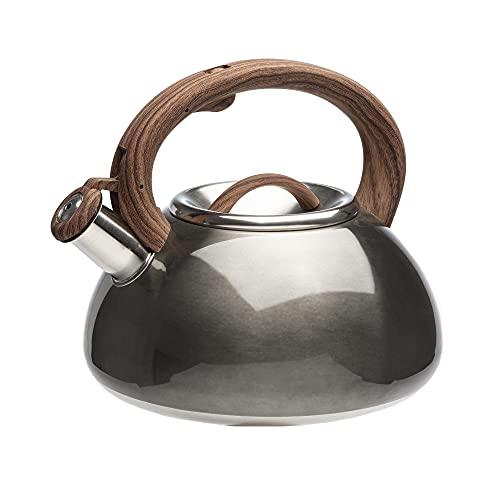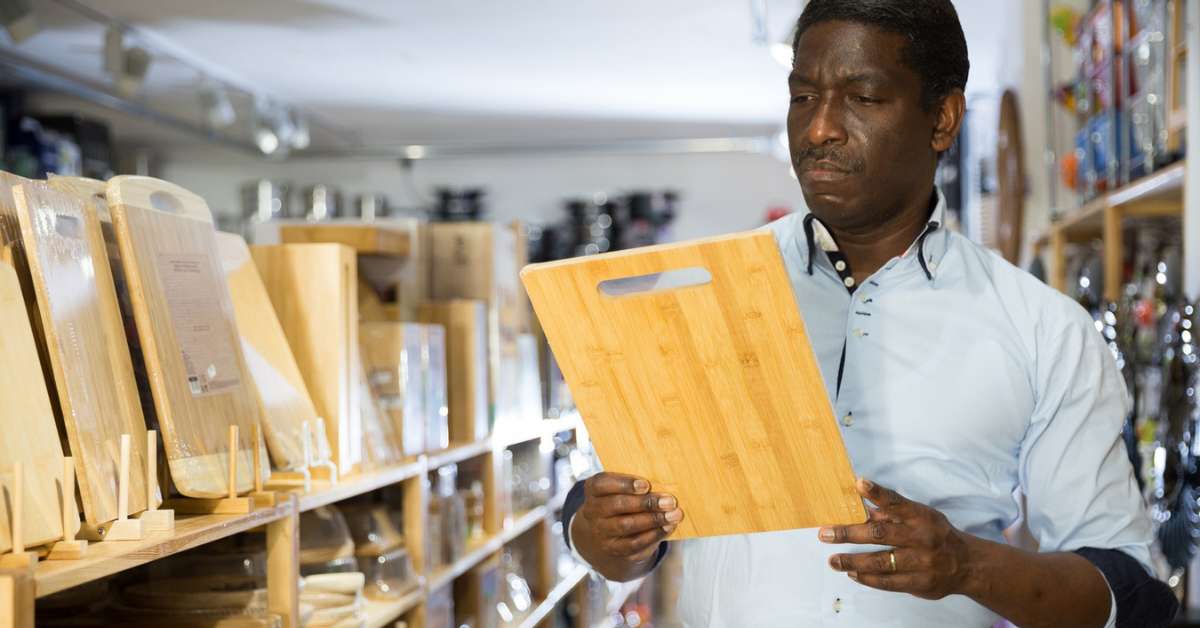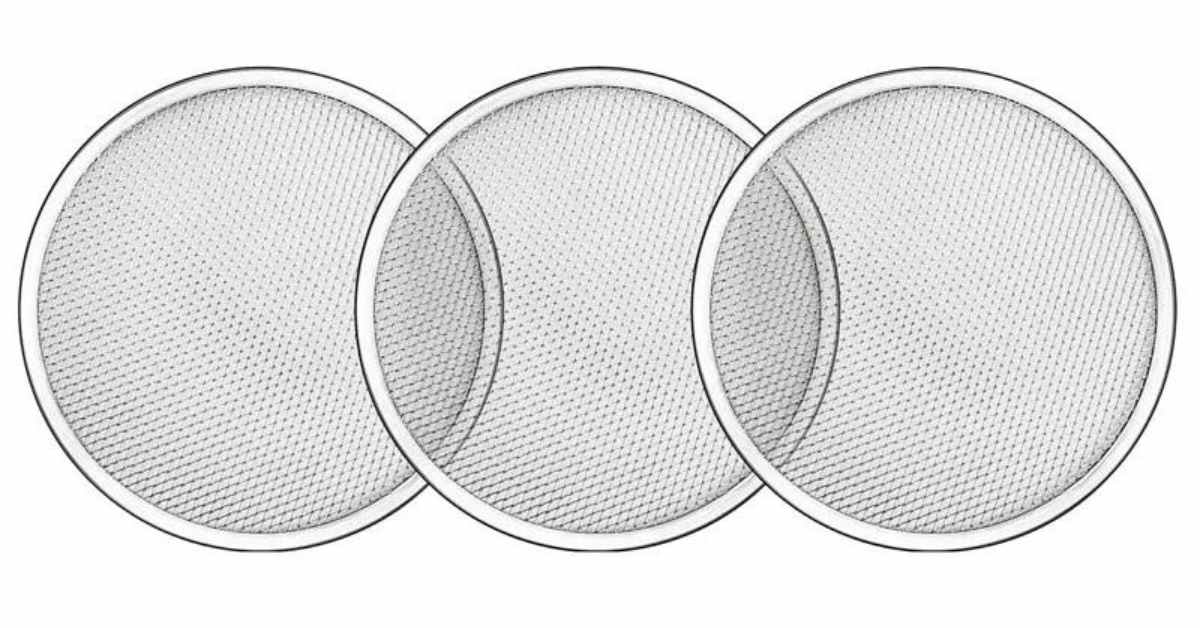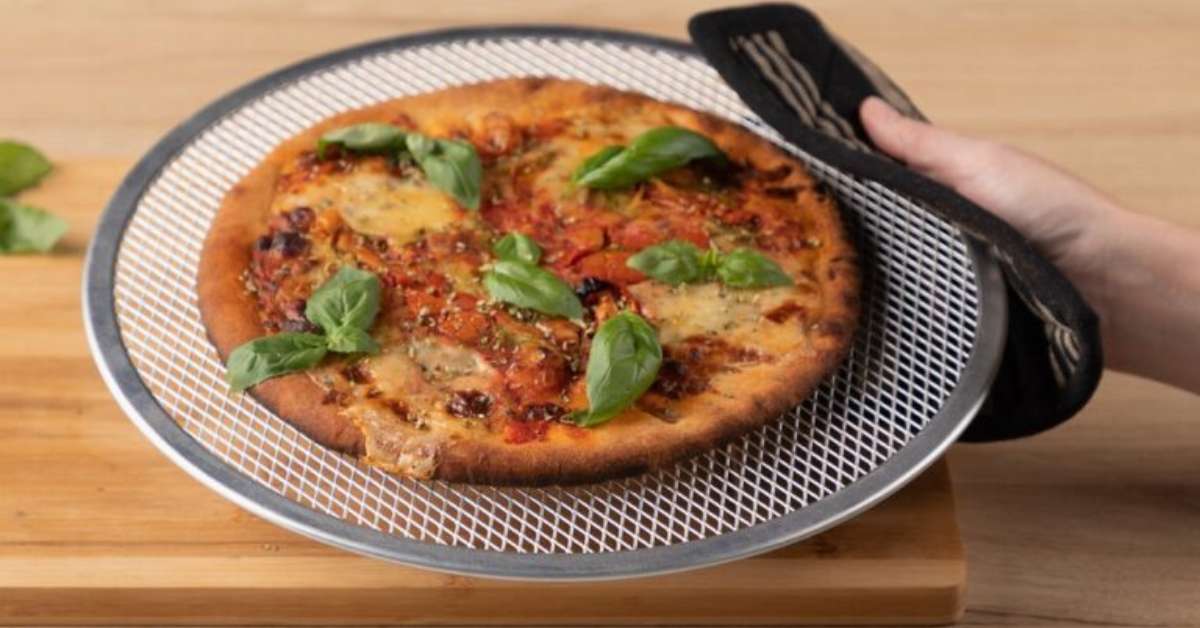Welcome to our guide on elegantly how to display cutting boards on your kitchen counter! Cutting boards are not only practical kitchen tools but also add a touch of charm and functionality to your cooking space. You can transform your kitchen counter into a delightful focal point by showcasing them visually.
This article shares creative and space-efficient ideas to organize and exhibit your cutting boards, elevating your culinary haven’s aesthetics and efficiency. So, let’s dive in and discover the art of displaying cutting boards like a pro!
Table of Contents
ToggleChoosing the Right Cutting Board Display
Various display options exist when showcasing your cutting boards, each offering unique charm and functionality. Selecting the proper display method depends on your kitchen’s layout, available space, and personal preferences. Let’s explore some popular cutting-board display options:
Countertop Display:
One of the simplest and most popular ways to exhibit your cutting boards is through a countertop display. This method involves placing the cutting boards directly on your kitchen counter, making them easily accessible while adding a touch of culinary flair to your workspace.
You can arrange the boards side by side or stack them vertically, depending on the number of cutting boards and the available space on your counter. Consider using cutting boards of similar materials and sizes for a cohesive look.
Wall Display:
A wall display is an excellent choice for those who wish to save precious counter space or create a decorative focal point. This method involves mounting your cutting boards on the kitchen wall using hooks, racks, or floating shelves.
Wall displays free up valuable counter space and adds an artistic touch to your kitchen decor. Depending on your aesthetic preferences, you can arrange the cutting boards in various patterns, such as a symmetrical grid or an asymmetrical arrangement.
Drawer Display:
A drawer display might be ideal if you prefer to keep your cutting boards neatly tucked away and out of sight. Modern kitchen designs incorporate dedicated drawers with built-in slots or dividers to store cutting boards. This approach offers a clutter-free look while ensuring your cutting boards are easily accessible whenever needed.
Cabinet Display:
Unlike drawer displays, cabinet displays provide a hidden storage solution for your cutting boards. Utilize the interior of a cabinet door or install vertical dividers within a cabinet to keep the cutting boards organized and within reach. Cabinet displays are an excellent option for those who value a clean and seamless appearance in their kitchen.
When choosing the proper cutting board display, consider the overall design of your kitchen, your cooking habits, and the frequency of use. Whichever display option you choose, the goal is to create a visually pleasing and functional arrangement that enhances your kitchen’s aesthetics while making your culinary tasks a breeze.
Factors to Consider When Choosing a Cutting Board Display
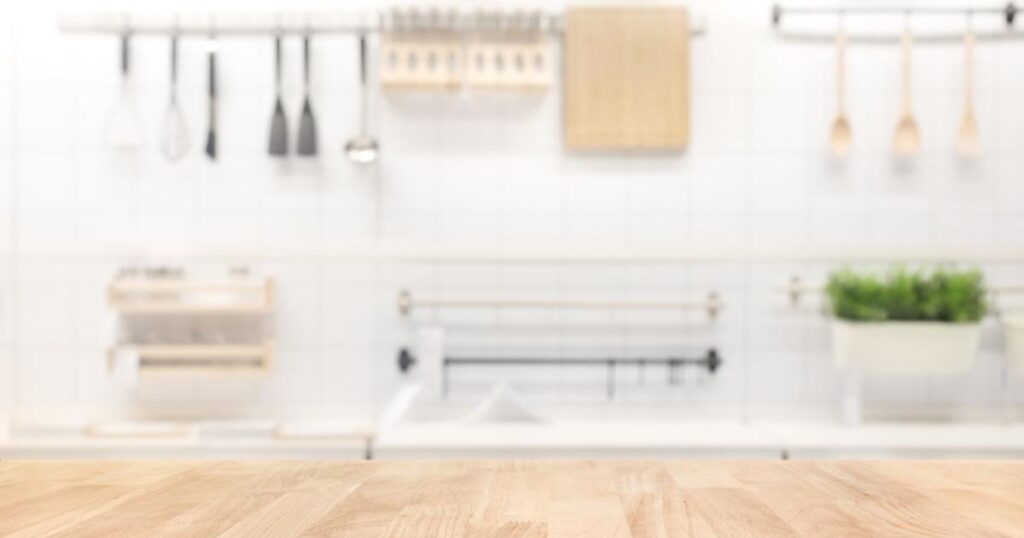
Selecting the perfect cutting board display involves thoughtful consideration of several factors. Here are the key elements to keep in mind when deciding on the ideal presentation for your cutting boards:
Kitchen Size and Layout:
The size and layout of your kitchen play a crucial role in determining the most suitable display option. If you have a spacious kitchen with ample countertop space, a countertop display could be an excellent choice, allowing you to showcase your cutting boards within easy reach while adding to the kitchen’s charm.
On the other hand, if you have limited counter space, a wall display or cabinet display might be more practical, ensuring your cutting boards are organized without occupying valuable workspace.
The number of Cutting Boards:
Consider the number of cutting boards you own and plan to display. If you have a diverse collection of cutting boards, you may opt for a wall display or cabinet display to accommodate all your boards in an orderly manner.
Alternatively, a simple countertop display might suffice if you have just a few cutting boards. Organizing your cutting boards effectively will enhance your kitchen’s aesthetics and make choosing the right board for different culinary tasks easier.
Aesthetics and Style:
Your cutting board display should complement your kitchen’s overall aesthetics and style. If you have a modern kitchen with minimalist decor, a sleek wall display or drawer display can seamlessly blend in.
A countertop display with wooden cutting boards can add a warm and inviting touch to a rustic or farmhouse-style kitchen. Consider the materials, colors, and design of your cutting boards, and choose a display method that enhances the overall look of your kitchen.
Budget:
The cost of the display option is another crucial factor to consider. While countertop displays are generally more budget-friendly, wall displays, drawer displays, or cabinet displays may require additional hooks, racks, dividers, or installation expenses. Set a budget that aligns with your preferences and explore options that suit your style and are within your financial means.
You can choose the most suitable cutting board display that perfectly complements your kitchen, enhances functionality, and brings out your culinary creativity by carefully evaluating these factors. Remember that the correct display not only showcases your cutting boards but also adds to the overall ambiance of your cooking space.
Creative Cutting Board Display Ideas
Looking for unique and eye-catching ways to display your cutting boards? We’ve got you covered with some creative and inspiring ideas that will transform your kitchen into a stylish culinary haven:
Minimalist Wooden Pegboard Display:
Embrace simplicity and functionality with a minimalist wooden pegboard display. Install a pegboard on your kitchen wall and hang your cutting boards with hooks or pegs. This display keeps your boards organized and allows you to swap and rearrange them whenever you like quickly. The natural wood finish of the pegboard adds warmth to your kitchen decor, making it an ideal choice for those who appreciate a clean and modern aesthetic.
Hanging Cutting Board Display:
Add a touch of whimsy and elegance to your kitchen by creating a hanging cutting board display. Attach ropes or leather straps to the corners of your cutting boards and hang them from sturdy hooks mounted on the ceiling or a kitchen beam. This display method saves valuable counter space and serves as a unique focal point in your kitchen. Choose colorful cutting boards to infuse vibrancy into your culinary space.
Industrial Pipe Cutting Board Rack:
An industrial pipe-cutting board rack is a fantastic option for those who adore the industrial look. Create a custom rack using metal pipes and fittings, then place your cutting boards vertically between the pipes. This display adds a rugged and edgy charm to your kitchen and ensures your cutting boards are easily accessible whenever needed. Consider using reclaimed wood for a more sustainable and eco-friendly approach.
Rustic Woven Basket Display:
Bring a cozy and rustic vibe to your kitchen with a woven basket display. Find a large, aesthetically pleasing woven basket and arrange your cutting boards. This display method works exceptionally well for wooden cutting boards, as it complements their natural beauty. You can place the basket on your kitchen island or a designated countertop area, adding a touch of farmhouse elegance to your cooking space.
Remember, the key to a captivating cutting board display lies in choosing a method that reflects your style and complements your kitchen’s overall decor. Whether you opt for a minimalist pegboard, a whimsical hanging display, an industrial pipe rack, or a rustic woven basket, each idea brings its unique charm, transforming your cutting boards into functional tools and captivating works of art. Happy decorating!
How to Create a DIY Cutting Board Display
If you’re a fan of hands-on projects and want to add a personal touch to your kitchen, crafting your DIY cutting board display can be a fulfilling and rewarding experience. Follow these step-by-step instructions to create a custom cutting board display that perfectly suits your style and kitchen space:
Tools and Materials:
Before you begin, gather the necessary tools and materials for your DIY cutting board display project:
- Wooden boards or planks (size and number based on your preferred display design)
- Saw (circular saw or miter saw)
- Sandpaper (medium and fine grit)
- Wood stain or paint (optional, based on your preference)
- Brushes or rags (for applying stain or paint)
- Wood glue
- Clamps
- Screwdriver and screws
- Drill
- Picture hangers or D-ring hangers
- Measuring tape
- Pencil
- Level
Step-by-Step Instructions
Plan Your Design: Determine the size and layout of your cutting board display. Consider whether you want a vertical or horizontal arrangement, and measure the available space on your wall to ensure the display fits perfectly.
Prepare the Wooden Boards: Cut the wooden boards or planks to your desired lengths using a saw. Sand the edges and surfaces of the boards with medium and fine grit sandpaper to create a smooth finish.
Stain or Paint (Optional): If you prefer a stained or painted finish, now is the time to
apply it. Choose a wood stain that complements your kitchen decor or paint that matches your style. Apply the stain or paint evenly and let it dry completely.
Arrange the Boards: Once the stain or paint is dry, arrange the wooden boards according to your chosen design. Use wood glue to secure the boards together, and clamp them until the glue sets.
Attach the Backing: To mount your cutting board display on the wall, attach a sturdy backing to the back of the boards. This could be another piece of wood running horizontally across the back or individual mounting brackets for each board.
Drill Holes for Hanging: Using a drill, create holes or slots in the backing for mounting the display on the wall. Ensure the holes are evenly spaced and level to guarantee a balanced and visually appealing display.
Mount the Display: With the holes in place, it’s time to mount the cutting board display on the wall. Use screws and appropriate wall anchors to secure the display firmly in position.
Add Hanging Hardware: Depending on the type of holes or slots you created, attach picture hangers or D-ring hangers to the back of the display for easy and secure hanging.
Hang and Level: Finally, hang your DIY cutting board display on the designated wall in your kitchen. Use a level to ensure it hangs straight and looks professional.
Now you have a stunning and customized display that showcases your cutting boards and reflects your creative flair and DIY skills. Enjoy the satisfaction of crafting something unique for your kitchen and savor the compliments from friends and family who admire your handiwork. Happy crafting!
Maintenance and Cleaning of Cutting Board Displays
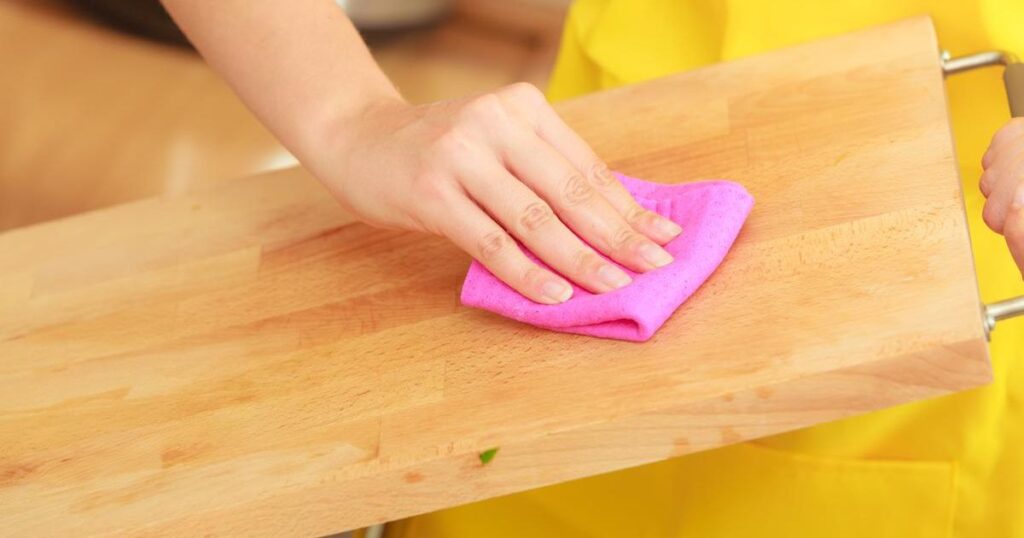
Keeping your cutting board display clean and well-maintained is essential for hygiene and preserving its appearance and durability. Follow these simple guidelines for daily cleaning and periodic deep cleaning to ensure your cutting board display stays in top-notch condition:
Daily Cleaning
Wipe Down After Use: After each use, wipe down the cutting boards with a damp cloth or sponge to remove any food debris, stains, or spills. This prevents the buildup of bacteria and keeps your display looking tidy.
Use Mild Soap: For tougher stains or odors, use mild dish soap, warm water, and vinegar. Avoid harsh chemicals or abrasive cleaners, as they can damage the surface of the cutting boards.
Air Dry Properly: Allow the cutting boards to air dry thoroughly before placing them back on display. Moisture trapped between the boards and the display surface can lead to mold and warping.
Rotate the Boards: To ensure even wear, regularly rotate the cutting boards on display. This prevents some boards from getting more exposure than others and helps maintain their appearance.
Deep Cleaning
Remove Cutting Boards: Periodically, remove the cutting boards from the display for a thorough cleaning.
Prepare a Cleaning Solution: In a large basin or sink, create a cleaning solution with warm water and a few drops of dish soap or a mixture of water and vinegar.
Soak the Boards: Immerse the cutting boards in the cleaning solution and let them soak for a few minutes. This helps to loosen stubborn stains and disinfect the boards.
Scrub Gently: Use a soft-bristled brush or sponge to gently scrub the cutting boards, paying extra attention to any stubborn stains or residue.
Rinse Thoroughly: After scrubbing, rinse the cutting boards with clean water to remove any soap or cleaning solution residue.
Dry Completely: Place the cutting boards on a drying rack or clean towel to air dry completely. Make sure there’s enough ventilation to prevent moisture from being trapped underneath.
Apply Food-Safe Oil (Wooden Boards): For wooden cutting boards, apply food-safe mineral oil or cutting board oil to keep the wood moisturized and prevent it from drying out or cracking.
Reassemble the Display: Once the cutting boards are fully dry, reassemble them on the display.
By following these maintenance and cleaning practices, your cutting board display will stay sanitary and retain its beauty and functionality over time. Regular care and attention will ensure that your display remains a delightful centerpiece in your kitchen, showcasing your collection of cutting boards with pride.
Conclusion
Creating a captivating cutting board display is a beautiful way to elevate the aesthetics and functionality of your kitchen. You can choose the perfect display method that suits your unique taste by carefully considering kitchen size, the number of cutting boards, your style preferences, and your budget.
Whether you opt for a minimalist wooden pegboard, a whimsical hanging display, an industrial pipe rack, or a rustic woven basket, your DIY cutting board display will infuse your kitchen with charm and personality. With proper maintenance and regular cleaning, your display will continue to be a delightful focal point, showcasing your collection of cutting boards while adding a touch of culinary elegance to your home.
FAQs
Can I display different types of cutting boards together?
Absolutely! Displaying different types of cutting boards together can create an eclectic and visually appealing look. Mix and match cutting boards of different materials, such as wood, plastic, or bamboo, to add texture and variety to your display. Ensure the cutting boards are clean and well-maintained to maintain a hygienic kitchen environment.
Can I use a magnetic knife holder to display cutting boards?
Yes, a magnetic knife holder can double as a cutting board display. Some magnetic knife holders are strong enough to hold lightweight cutting boards made of materials like bamboo or plastic. Attach the cutting boards to the magnetic strip, ensuring they are securely placed. However, heavier cutting boards, like those made of thick hardwood, might not be suitable for this method.
How often should I clean my cutting board display?
For daily cleaning, wipe down the cutting boards after each use to remove debris and spills. As for deep cleaning, aim to do it every one to two weeks, depending on how frequently you use the cutting boards. Regular maintenance will ensure your display stays hygienic and well-maintained.
How do you display a cutting board on a countertop?
To display a cutting board on a countertop, place it directly on the surface. If you have multiple cutting boards, arrange them side by side or stack them vertically. Consider using a cutting board organizer or stand to keep them neatly grouped and easily accessible.
What do you use to hang a cutting board?
To hang a cutting board on the wall, you can use picture hangers, D-ring hangers, or adhesive hooks designed to hold the weight of the cutting board. Ensure that the hooks or hangers are securely attached to the back of the cutting board and compatible with the wall surface (e.g., drywall, wood, tile). This allows you to create a stylish wall display while keeping your cutting boards within reach.


